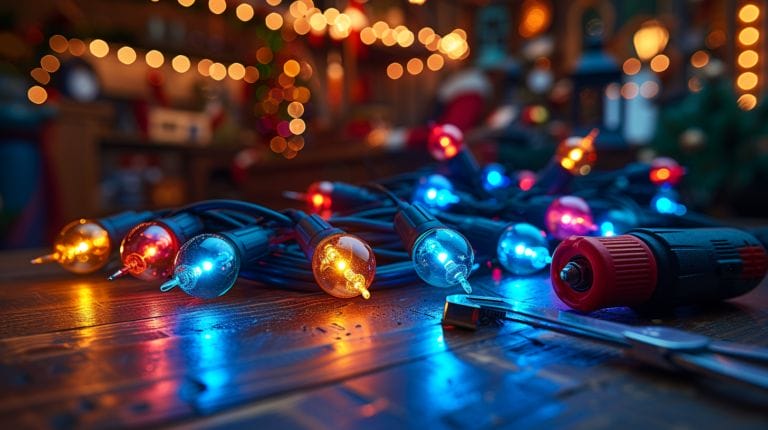How to Use Watering Bulbs: Simple Guide for Plants
We all know maintaining consistent soil moisture is important for healthy plants, but have we considered the efficiency of watering bulbs? These handy tools can simplify our gardening routine greatly. First, we need to understand how watering globes work. They release water gradually, ensuring our plants get just the right amount without us constantly checking. But how do we choose the right one and use it correctly? And what about maintenance? Let’s explore these aspects to make our plant care routine both effective and effortless.
Key Takeaways
- Fill the watering bulb with water, ensuring it’s full to provide a steady release.
- Insert the bulb into the soil at an angle to ensure proper water flow.
- Monitor soil moisture and refill the bulb every 1 to 2 weeks, adjusting for plant needs and environmental conditions.
- Clean the bulb regularly to prevent clogs and ensure efficient water delivery.
- Match the bulb size to your plant’s requirements; larger plants need larger bulbs, while delicate plants benefit from smaller ones.
Understanding How Watering Globes Work for Plant Care

Watering bulbs serve as self-watering devices that slowly release water into the soil, ensuring plants stay hydrated without constant manual watering. The science behind them is simple yet effective: they release water gradually as the soil dries out. This self-regulating mechanism maintains consistent soil moisture levels for our plants.
Unlike traditional watering methods that risk over or under-watering, watering bulbs offer a balanced approach. They provide a steady moisture supply, promoting healthier root systems and preventing waterlogging or nutrient leaching, and they’re especially beneficial for those of us with busy lifestyles or who travel frequently.
Choosing the Right Watering Globe for Your Garden

Selecting the perfect watering bulb often hinges on understanding the different materials, sizes, and specific plant requirements. Glass watering bulbs are elegant and transparent, allowing easy observation of the water level. However, they’re more fragile. Plastic globes, on the other hand, are more durable and often less expensive, but may become discolored over time.
Here are key points to keep in mind when choosing the right watering globe:
- Material: Glass vs plastic, based on aesthetics and durability
- Plant Size: Larger plants require larger globes
- Watering Frequency: Plants needing frequent hydration benefit from bigger globes
- Pot Size: Make sure the globe fits well within the pot
- Durability: Choose a material that can withstand your garden environment
Step-by-Step Guide on How to Use Watering Globes

To ensure your plants stay hydrated, follow these steps:
- Fill the watering bulb with the right amount of water. This can vary depending on the type of plants you have. For larger plants, fill the globe completely, while smaller plants might only need a half-filled globe.
- Position the globe’s stem into the soil at an angle, ensuring it’s deep enough to reach the plant’s roots but not so deep that it blocks water flow.
- Monitor the soil moisture and adjust the frequency of refilling accordingly. Typically, refill the globe every 1-2 weeks. However, in hotter conditions, more frequent refilling may be necessary.
Cleaning and Maintaining Your Self-Watering Bulbs

Proper upkeep of watering bulbs extends their lifespan and guarantees consistent moisture for your plants. Here’s how to clean them:
- Carefully remove the globe from the soil and separate any detachable parts.
- Use warm water to rinse out any soil or residue inside the globe.
- Use a small brush to scrub away stubborn dirt and algae.
- For a deeper clean, soak the globe in a mixture of water and white vinegar for about 20 minutes.
- After soaking, rinse again thoroughly and let the globe air dry completely before reassembling.
Troubleshooting Common Issues with Watering Globes

If you encounter issues with watering bulbs, these troubleshooting steps can help:
- If the globe isn’t working properly, it might be blocked. Rinse the spout under warm water to clear any debris. A thin brush or pipe cleaner can help dislodge stubborn clogs.
- If your plants are getting too much water, loosen the soil before inserting the globe and ensure it’s inserted at an angle to moderate water flow.
- If the globe isn’t releasing water properly, fill the globe completely, cover the opening with your finger, and quickly invert it into the soil. This action helps maintain a consistent water flow.
Conclusion
To sum up, by following our guide on using watering bulbs, we can guarantee our plants stay healthy and hydrated. These simple tools make it easy to maintain consistent soil moisture, promoting robust root systems.
Let’s choose the right globes, set them up correctly, and keep them clean and well-maintained. With just a bit of attention, we’ll enjoy thriving plants that brighten up our homes and gardens.
Happy gardening!
Frequently Asked Questions
What are watering bulbs and how do they work?
Watering bulbs are globes filled with water that you can place in your outdoor plants to provide a sustainable solution for keeping your plants watered. The globes release water slowly as the soil dries out, ensuring your plants receive the right amount of water.
Why should I use watering bulbs for my plants?
Watering bulbs are a fantastic solution for keeping your plants watered, especially if you notice that your plants need a bit more water than what you’re providing. They are ideal for plants like ferns and succulents that require minimal watering.
How often should I water my plants using watering bulbs?
It is recommended to check the water level in the globes regularly and refill them as needed. The rate at which you need to water your plants using watering bulbs will depend on factors like temperature, season, and the water needs of your plants.
How do I clean the watering bulbs?
To clean the globes, you can gently wash them with a solution of water and a bit of baking soda or lemon juice. Regular cleaning will ensure that the globes remain functional and don’t impede the flow of water to your plants.
Can I use watering bulbs for decorative purposes?
Yes, watering bulbs come in attractive designs that can also serve as stylish decorations for your outdoor plants. They can add a decorative touch to your garden while also ensuring your plants are well-watered.







